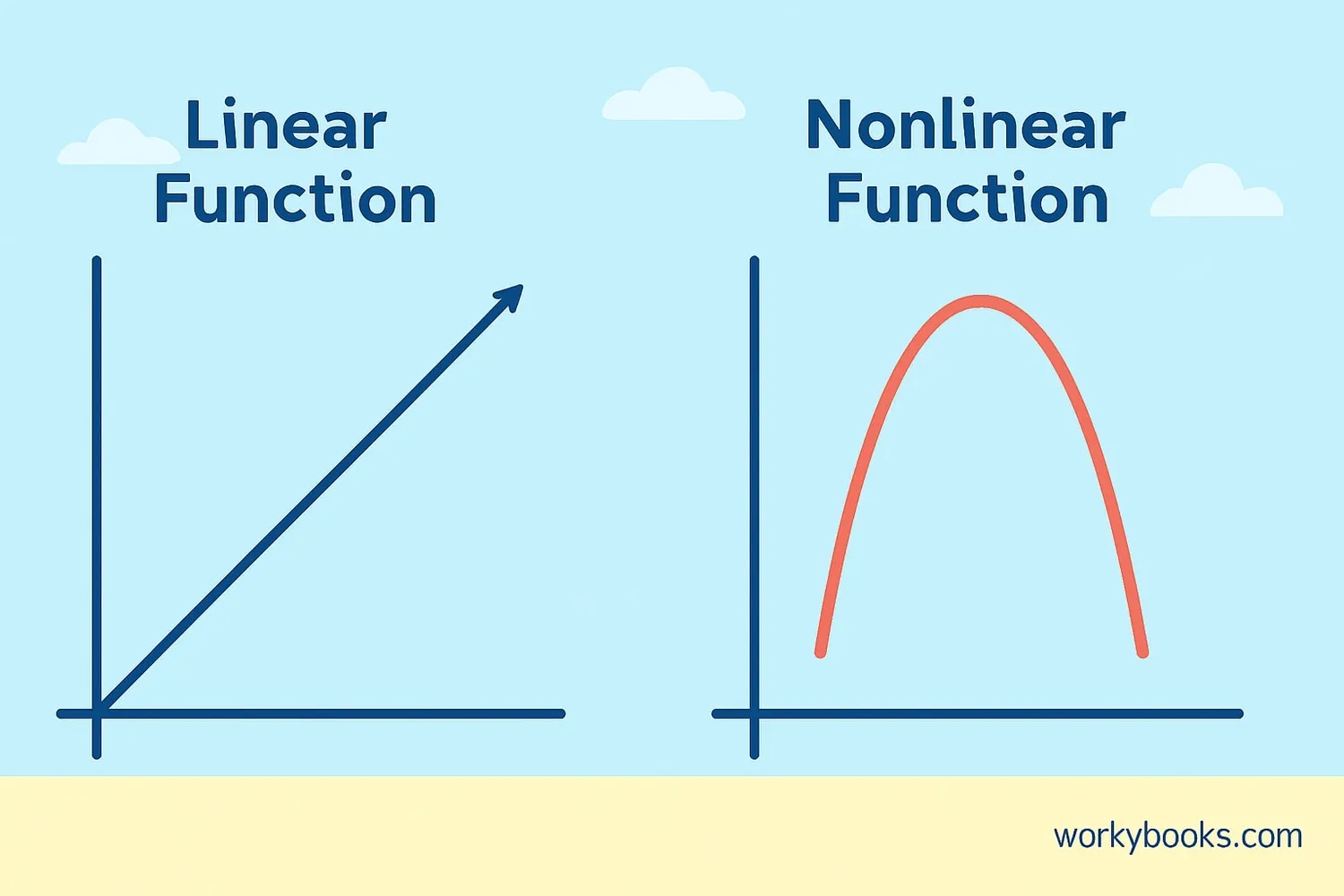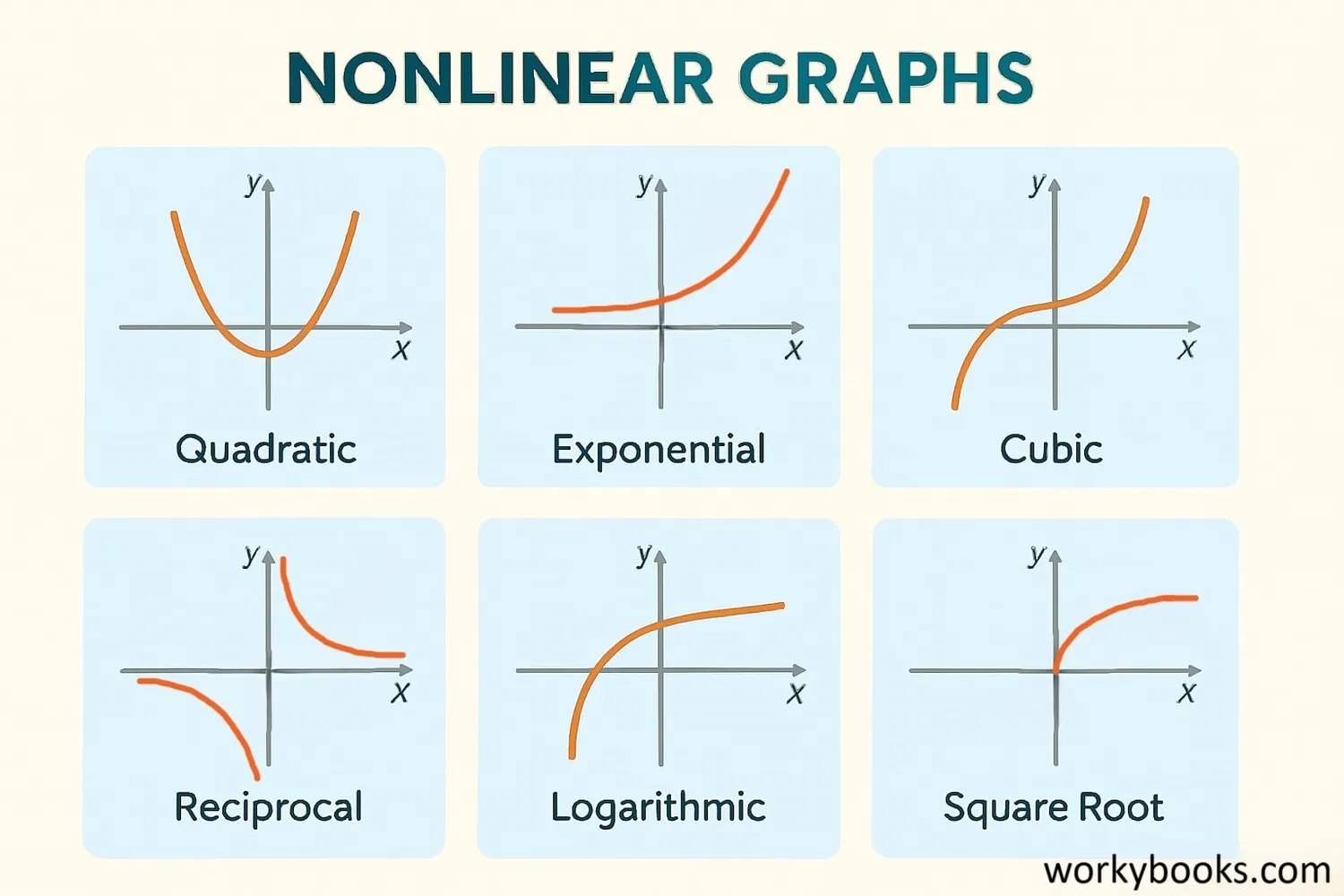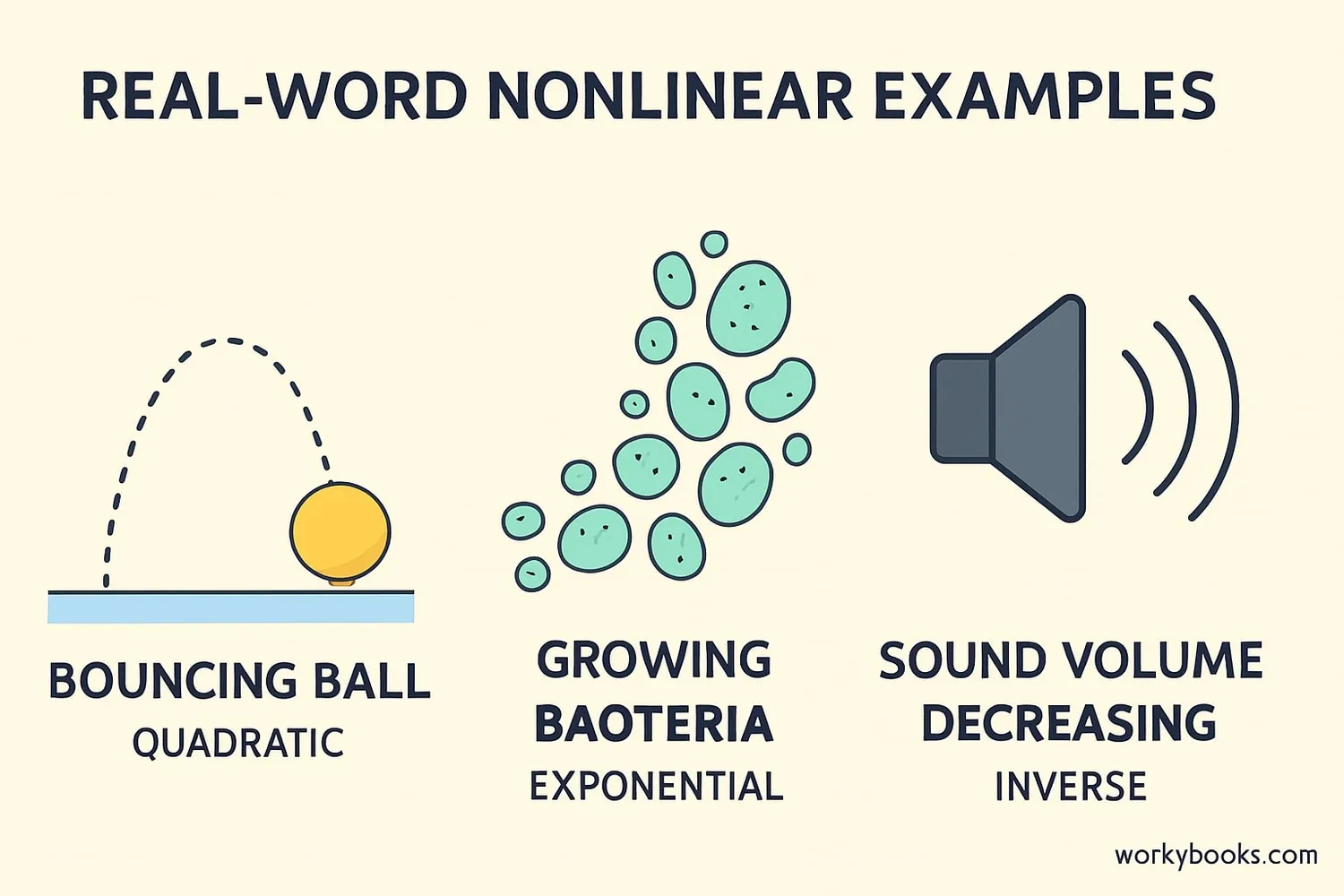Nonlinear Functions - Definition, Examples, Quiz, FAQ, Trivia
Learn how curved graphs work with fun examples and interactive activities
What is a Nonlinear Function?

A nonlinear function is like a roller coaster for numbers - instead of going in a straight line, it curves, bends, or changes direction! Unlike linear functions that make straight lines, nonlinear functions create curves when you graph them.
Key differences:
• Linear functions have a constant rate of change (like climbing stairs at the same pace)
• Nonlinear functions have changing rates (like running fast then slowing down)
In math terms, nonlinear functions have variables raised to powers (like x²), multiplied together (like x·y), or in exponents (like 2ˣ). They make the world more interesting because most things in nature aren't perfectly straight!
Key Concept
Nonlinear functions don't form straight lines when graphed. Their graphs curve, bend, or change direction!
Types of Nonlinear Functions

Forms a U-shaped parabola. Equation: y = ax² + bx + c
Example: y = x²
Grows very quickly. Equation: y = a·bˣ
Example: y = 2ˣ
Has an S-shaped curve. Equation: y = ax³ + bx² + cx + d
Example: y = x³
Grows slowly. Equation: y = logb(x)
Example: y = log(x)
One value increases while the other decreases. Equation: y = k/x
Example: y = 1/x
Can have many curves. Equation: y = anxn + ... + a1x + a0
Example: y = x⁴ - 2x²
How to Identify Nonlinear Functions

You can spot nonlinear functions in three different ways:
1. Look at the equation:
• If you see exponents (like x² or 2ˣ)
• If variables are multiplied together (like x·y)
• If there's a square root (√x) or logarithm (log x)
2. Look at a table of values:
• Calculate the rate of change between points
• If the rate isn't constant → nonlinear!
3. Look at the graph:
• If it's NOT a straight line → nonlinear!
Practice Tip
Try making a table of values for y = x². Notice how the differences between y-values aren't constant? That's a clue it's nonlinear!
Examples & Graphs

Let's look at some common nonlinear functions and their graphs:
Quadratic Example: y = x²
• Graph: U-shaped parabola
• Real world: Path of a basketball shot
Exponential Example: y = 2ˣ
• Graph: Starts flat then curves upward steeply
• Real world: Spread of a rumor
Cubic Example: y = x³
• Graph: S-shaped curve
• Real world: Volume growing as you increase container size
Inverse Variation: y = 1/x
• Graph: Curves downward approaching both axes
• Real world: Time to complete a task vs number of helpers
Graphing Tip
When graphing nonlinear functions, create a table of values to plot points. Connect them with smooth curves instead of straight lines!
Real Life Examples

Nonlinear functions are everywhere in our world! Here are some examples:
Nature:
• The path of a thrown ball (quadratic)
• How plants grow (exponential at first)
• Spider webs (logarithmic spirals)
Daily Life:
• Phone battery charging (exponential)
• Braking distance of a car (quadratic)
• How loudness changes with distance (inverse)
Science:
• Planetary orbits (elliptical - nonlinear)
• Radioactive decay (exponential)
• Pendulum motion (trigonometric - nonlinear)
Did You Know?
Your heartbeat follows a nonlinear pattern - it speeds up and slows down throughout the day!
Nonlinear Functions Quiz
Test your knowledge with this 5-question quiz. Choose the correct answer for each question.
Frequently Asked Questions
Here are answers to common questions about nonlinear functions:
Math Trivia
Discover fascinating facts about nonlinear functions:
Ancient Curves
The ancient Greeks studied nonlinear curves like parabolas and ellipses over 2000 years ago! Archimedes wrote about parabolas around 250 BC.
Butterfly Effect
Some nonlinear systems show "chaos theory" where tiny changes lead to big differences. This is called the butterfly effect - where a butterfly flapping its wings might cause a tornado weeks later!
Space Travel
NASA uses nonlinear functions to calculate rocket trajectories. Getting to the Moon requires solving complex nonlinear equations to account for gravity's changing effects!
Million-Dollar Equations
Some nonlinear equations are so complex that the Clay Mathematics Institute offers $1 million to anyone who can solve them! These are called the Millennium Prize Problems.


